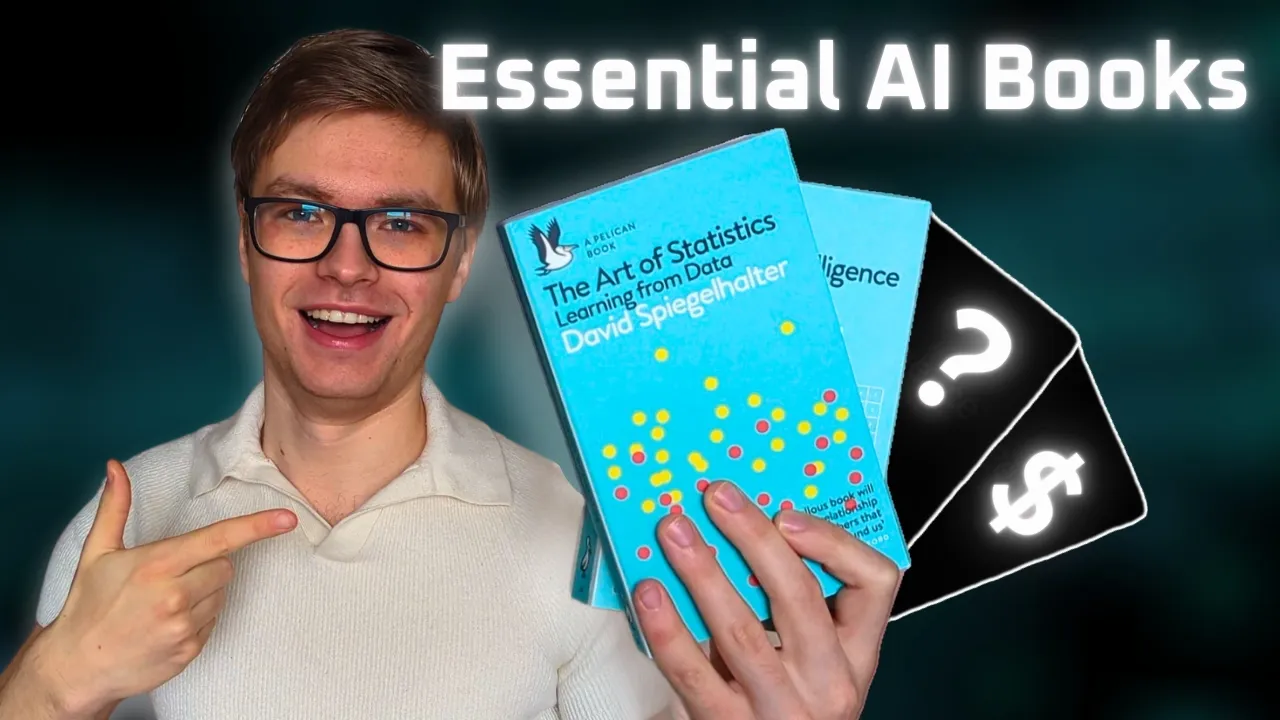Four Knowledge Pillars for AI Engineering Success
Becoming an exceptional AI engineer requires more than technical proficiency. The most effective practitioners develop expertise across four complementary knowledge domains that together form a foundation for creating valuable AI applications. These knowledge pillars – AI fundamentals, statistical evaluation, philosophical context, and architectural patterns – each contribute unique perspectives that inform better engineering decisions.
AI Fundamentals: Understanding the Full Landscape
The first essential knowledge pillar provides a comprehensive understanding of AI that extends beyond current trends. Melanie Mitchell’s “Artificial Intelligence: A Guide for Thinking Humans” exemplifies this knowledge domain by exploring AI development across multiple approaches and eras.
This foundational knowledge helps engineers recognize patterns in AI development cycles, understand the unique characteristics of different approaches, identify potential vulnerabilities, and place current advances in appropriate historical context.
For instance, Mitchell’s exploration of how vision models can be fooled by carefully crafted inputs provides insights that transfer directly to current language model vulnerabilities. Engineers with this broader perspective anticipate potential failure modes rather than being surprised by them during deployment.
Statistical Thinking: The Evaluation Framework
The second knowledge pillar provides frameworks for properly evaluating AI systems. David Spiegelhalter’s “The Art of Statistics: Learning from Data” builds this essential competency by teaching critical thinking about data collection, analysis, and interpretation.
Statistical literacy transforms how engineers design meaningful evaluation metrics, interpret performance results, identify potential biases, and make predictions about real-world performance.
Engineers with this knowledge avoid common pitfalls like drawing conclusions from insufficient sample sizes or failing to segment analysis appropriately across different user groups or data types.
Philosophical Considerations: The Ethical Compass
The third knowledge pillar examines the philosophical dimensions of AI development. Nick Bostrom’s “Superintelligence” contributes to this domain by exploring fundamental questions about intelligence, potential AI trajectories, and societal implications.
This philosophical grounding helps engineers consider ethical implications of design decisions, establish appropriate boundaries, anticipate potential societal impacts, and communicate more effectively about capabilities and limitations.
While seemingly abstract, these philosophical considerations directly influence practical engineering decisions about which features to implement, what constraints to establish, and how systems should interact with users.
Architectural Patterns: Enduring Design Principles
The fourth knowledge pillar focuses on architectural patterns that maintain relevance despite rapid technological change. Books about specific AI architectures with lasting power – like those covering Retrieval-Augmented Generation (RAG) systems – build this essential understanding. For a practical implementation guide, explore my comprehensive RAG systems tutorial.
Knowledge of these architectural patterns helps engineers distinguish between fleeting implementation trends and enduring principles, select appropriate approaches for specific problems, design systems with greater longevity, and create more maintainable architectures.
Understanding these patterns at a conceptual level – their core components, inherent tradeoffs, and problem-solving approaches – equips engineers to design systems that can evolve with advancing technology rather than requiring complete rebuilds.
The Integration of Knowledge Domains
What makes these four pillars particularly powerful is how they complement and reinforce each other. AI fundamentals provide the essential context for understanding what’s possible and likely to succeed. Statistical thinking equips you with frameworks for proper evaluation and validation, ensuring your systems perform as expected in the real world. Philosophical considerations guide ethical implementation decisions, helping you navigate the complex implications of your work. Meanwhile, architectural patterns inform system design and evolution, allowing you to create solutions that stand the test of time.
Engineers who develop expertise across these interconnected domains gain a remarkable advantage. They can anticipate model behaviors before deployment, design more robust evaluation strategies that catch potential issues early, create systems with greater longevity in a rapidly changing field, and implement solutions with appropriate ethical considerations baked in from the start. This holistic understanding transforms technical knowledge into wisdom.
From Knowledge to Application
The journey from understanding these knowledge domains to applying them effectively involves both individual study and community learning. Reading foundational texts builds the conceptual framework, while community participation provides opportunities to apply these concepts, receive feedback, and learn from others’ experiences.
This combined approach accelerates the development of both theoretical understanding and practical wisdom – ultimately leading to AI applications that effectively solve real problems rather than simply demonstrating technical capabilities. To understand what companies actually look for when hiring AI engineers, check out my detailed guide on AI engineer job requirements for 2025.
The Complete AI Engineer
What distinguishes exceptional AI engineers from average ones is this integration of multiple knowledge domains. While technical skills remain important, these broader conceptual foundations inform better decisions about which approaches to use, how to evaluate them, what constraints to implement, and how to design for evolution.
Engineers who develop expertise across these four pillars create AI applications that not only function correctly but solve meaningful problems, respect ethical boundaries, and maintain relevance as technologies evolve. Ready to build a portfolio that demonstrates these principles? Learn about my proven portfolio building strategy for six-figure AI engineering careers.
To see exactly how to implement these concepts in practice, watch the full video tutorial on YouTube. I walk through each knowledge pillar in detail and show you the technical aspects not covered in this post. If you’re interested in learning more about AI engineering, join the AI Engineering community where we share insights, resources, and support for your journey. Turn AI from a threat into your biggest career advantage!

